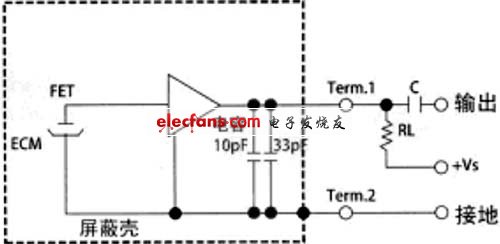Today's main electroacoustic products are high-performance microphones / handle microphones and balanced armature receivers and silicon microphones / ultrasonic sound wave sensors. Microphones (also known as microphones or transducers) are sold at half of the annual low-end microphones that are very inexpensive, and are geared towards the toy market and other applications where size and performance parameters are less stringent. The other half is the portable, high-end application market, such as mobile phones, cell phones, digital cameras, notebook computers, etc. Mobile phones are regarded as the fastest growing part of the microphone market. The volume of mobile phones is getting smaller and smaller, and more and more functions, so the requirements for the performance of next-generation microphones are constantly increasing. Microphone products should have the following characteristics: small size makes the product design more special; waterproof and splash-proof products are designed for outdoor use, suitable for high humidity environments; wide-frequency response range products (including ultrasonic frequency bands), can be used for voice, music and detection In the design of equipment products; super anti-noise design (including waterproof) can be used in high-noise environments; low-power products solve power consumption problems; balanced armature microphones (BJ series) provide their own signal sources; piezoelectric ceramic microphones adapt to different Harsh environment, high vibration sensitivity. It can be said that the biggest feature of modern microphone products is the MEMS (Micro Electro Mechanical System) technology SMD (SMD) and digitalization, miniaturization. The following introduces new electroacoustic product interface technologies such as electret condenser microphones, MEMS (microelectronic mechanical system) SMD silicon crystal microphones, digital microphones and ultrasonic acoustic patch sensors. Electret condenser microphone Electret condenser microphones (ECM) are commonly used in electronic and communications products. ECM can provide good acoustic performance and reliability under non-strict environmental conditions. Its main features: high-efficiency electrical specifications; industry standard sizes; omnidirectional, unidirectional and noise-cancellation (dual-direction); capacitors can be integrated for RF filtering; diverse terminals-non-solder type, pin type and pad type; Used in a wide variety of applications, including wired / wireless headphones, corded / cordless phones, PDAs, notebooks and mobile phones. This microphone consists of a diaphragm, back plate and electret layer. The movable diaphragm and the fixed back plate constitute the two plates of the variable capacitor. The electret layer stores a fixed charge equivalent to a capacitor voltage of approximately 100V. Sound pressure causes the diaphragm to vibrate, which changes the capacitance of the microphone. Since the number of charges distributed on the capacitor is constant, the voltage across the capacitor changes as the capacitance changes, according to the following capacitor charge formula: Where Q is charge, C is capacitance, and V is voltage. As the sound pressure changes, the capacitance increases or decreases slightly (ΔC), thereby causing the voltage to decrease or increase proportionally (ΔV). Microphones in mobile applications are very small, usually 3mm ~ 4mm in diameter and 1mm ~ 1.5mm in thickness. Therefore, their capacitance is also quite small, the typical value is 3pF ~ 5pF, in some cases, even as small as 1pF. Knowles AcousTIcs' MB3015 is the smallest ECM microphone in this class. Suitable for design applications that pursue ultra-miniaturization. Its internal structure and external schematic diagram, as shown in Figure 1. Figure 1 Internal structure and external schematic diagram of electret condenser microphone If the driving capacity of the signal generated by the condenser microphone is insufficient, a buffer or amplifier is required before further processing of the signal. According to the traditional method, a simple junction field effect tube (JFET) input amplifier has been used to achieve the pre-amplification of this microphone. With the improvement of the ECM micromechanical process, the volume of the microphone is getting smaller and smaller, and the capacitance is also continuously reduced. Since the standard JFET amplifier has a relatively large input capacitance, it causes significant attenuation of the signal from the microphone unit, so the JFET amplifier is no longer suitable for microphone requirements. Nowadays, the improvement of the amplifier circuit is driven by the improvement of the CMOS manufacturing process. There are many advantages to using CMOS analog and digital circuits to replace JFET amplifiers. Compared with traditional JFET amplifiers, preamplifiers using modern sub-micron CMOS processes have many advantages: reduced harmonic distortion, easier gain setting, multi-function modes, including low-power sleep mode, analog-to-digital conversion function, Can make the microphone output digital signals directly, greatly improving the sound quality, Improved anti-interference ability. Mono panel,High Quality Mono panel,Mono panel Details, Yangzhou Bright Solar Solutions Co., Ltd. Yangzhou Bright Solar Solutions Co., Ltd. , https://www.solarlights.pl